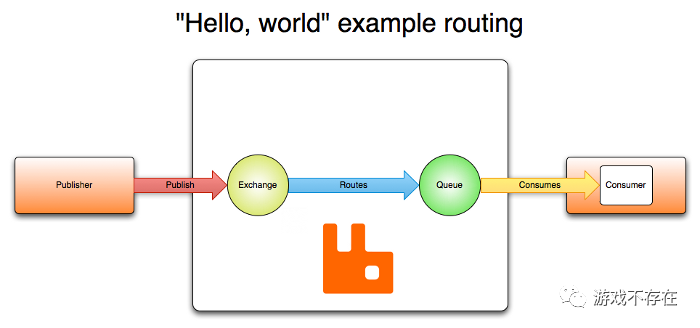Python 神器 Celery 源码解析(2)
Celery是一款非常简单、灵活、可靠的分布式系统,可用于处理大量消息,并且提供了一整套操作此系统的工具。Celery 也是一款消息队列工具,可用于处理实时数据以及任务调度。
几周前,我们一起阅读celery的源码(点击查看《第一篇》),学习了celery的工具之一,实现Promise功能的「vine库」。这周我们一起看另外一个工具,负责AMQP协议中数据传输的python-amqp库。它采用纯python实现(支持cython扩展),可以通过它理解AMQP协议的细节,打下celery的基础,本文包括如下几个部分:
py-amqp项目概述 帧机制详解 AMQP协议帧处理 AMQP使用 AMQP模型 小结 小技巧
py-amqp项目概述
py-amqp当前版本 5.0.6 ,主要代码如下表:
| 文件 | 描述 |
|---|---|
| abstract_channel.py | 抽象的channel |
| basic_message.py | message消息实现 |
| channel.py | channel频道实现 |
| connection.py | connection连接实现 |
| exceptions.py | 异常 |
| method_framing.py | 帧解析方法 |
| platform.py | 运行平台适配 |
| protocol.py | 协议对象 |
| sasl.py | ssl认证相关实现 |
| serialization.py | 序列化相关实现 |
| spec.py | 协议规则定义 |
| transport.py | 通讯实现 |
| util.py | 工具类 |
| *.pxd | Cython的实现,可以加速amqp |
项目主要包括2个功能:
AMQP协议的传输处理,包括字节流,帧和Message的序列化/反序列化 AMQP协议的Connection,Channel,Message三个基础模型实现
在正式开始之前,我们需要先简单了解一下AMQP协议:
高级消息队列协议即Advanced Message Queuing Protocol(AMQP)是面向消息中间件提供的开放的应用层协议,其设计目标是对于消息的排序、路由(包括点对点和订阅-发布)、保持可靠性、保证安全性[1]。AMQP规范了消息传递方和接收方的行为,以使消息在不同的提供商之间实现互操作性,就像SMTP,HTTP,FTP等协议可以创建交互系统一样。
高级消息队列协议是一种二进制应用层协议,用于应对广泛的面向消息应用程序的支持。协议提供了消息流控制,保证的一个消息对象的传递过程,如至多一次、保证多次、仅有一次等,和基于SASL和TLS的身份验证和消息加密。
文字比较难懂,结合下图,消息如何从生产者传递到消费者的过程,应该就可以理解AMQP:

上图是使用RabbitMQ实现的,RabbitMQ是一个开源的消息中间件,最早实现了AMQP协议,也是celery的默认消息中间件。强烈建议对AMQP协议不熟悉的朋友先阅读一下参考链接中的: 「AMQP 0-9-1 Model Explained」。我摘录了channel和message部分内容如下:
某些应用程序需要多个连接到代理。但是,同时保持许多 TCP 连接打开是不可取的,因为这样做会消耗系统资源并且使配置防火墙更加困难。AMQP 0-9-1 连接与可以被认为是“共享单个 TCP 连接的轻量级连接”的通道复用。
客户端执行的每个协议操作都发生在通道上。特定通道上的通信与另一个通道上的通信完全分开,因此每个协议方法还携带一个通道 ID(也称为通道号),这是一个整数,代理和客户端都使用它来确定该方法适用于哪个通道。通道仅存在于连接的上下文中,而不会单独存在。当连接关闭时,其上的所有通道也关闭。
对于使用多个线程/进程进行处理的应用程序,为每个线程/进程打开一个新通道而不在它们之间共享通道是很常见的。
AMQP 0-9-1 模型中的消息具有属性。有些属性非常常见,以至于 AMQP 0-9-1 规范定义了它们,应用程序开发人员不必考虑确切的属性名称。一些例子是:
内容类型 Content type 内容编码 Content encoding 路由键 Routing key 交付模式(持续与否)Delivery mode (persistent or not) 消息优先级 Message priority 消息发布时间戳 Message publishing timestamp 有效期 Expiration period 发布者应用程序 ID Publisher application id AMQP 代理使用某些属性,但大多数属性都可以由接收它们的应用程序解释。一些属性是可选的,称为headers。它们类似于 HTTP 中的 X-Header。消息属性是在发布消息时设置的。
帧机制详解
之前我介绍过Redis客户端和服务端的通讯协议:RESP(Redis Serialization Protocol),链接在这里: 「Redis-py 源码阅读」 。当时介绍的不够详细,这里我尝试通俗的介绍一下在TCP这种二进制流之上的构建各种应用层协议的常用方法。
我们知道TCP是基于字节流的传输层通信协议,你可以把它想像成下图:
+--------------------------------------------+
| |
|...00010001110001101110101111001111010110...|
| |
+--------------------------------------------+
这里的数据都是由0和1组成,头和尾的省略号表示还有很多数据,这么多数据从左(服务端)流向右 (客户端)。如果没有额外的说明,我们无法从中获取到有效的信息。类似一篇长文没有标点一样,没法读懂,就是一堆乱码。要解决这个问题,一般有3种办法:
定长信息 使用特定字符分隔信息 使用数据头指定信息长度
定长信息
定长信息,类似下图:
+--------+--------+--------+--------+--------+
| | | | | |
|00100110|10000111|00111011|11010110|00001111|
| | | | | |
+--------+--------+--------+--------+--------+
我们约定每个信息都是8位字符长度,这样上面的数据可以得到5段有效信息,分别是:00100110,10000111...。定长信息的缺陷很明显,如果信息大于8位需要截断,如果小于8位则需要补齐。
大家可以想象一下
00100110是如何补齐?方法很简单,位数补齐在前面,所以这里是用0补齐了2位。如果是在尾部进行补齐,就无法知道末尾的0是有效数据还是补齐的数据。
我们可以使用天幕杆帮忙理解,这种工厂生产出来的东西,都有着一样的长度:

使用特定字符分隔信息
也可以使用特定的间隔在数据流中区分信息,比如下图。
+--------------------------------------------+
| |
|01100110101010 101010010101 1000010110101101|
| |
+--------------------------------------------+
这里使用空格 来区分上面的数据,得到3段信息,分别是: 01100110101010 ...
注意仅仅为了示意方便,二进制流中没有空格,只有0010 0000
我们可以把间隔理解成竹竿的竹节,2个竹节之间就是一段。自然生长的竹节,肯定是长短不一。

使用分隔符方式的缺陷在于,效率比较低下,需要挨个判断是否分隔符。
使用数据头指定信息长度
数据头就是给每个消息加一个描述消息长度的头,比如下面:
+--------------------------------------------+
| |
|10110110100111010110111110101100011100011100|
| |
+--------------------------------------------+
1表示后面有1位数据,0表示后面没有数据,所以上面的数据前面部分翻译出来的信息就是0110 1001,对应ASCII的小写字母i:
1011011010011101011 # 流
0 1 1 0 1 0 0 1 # 去除长度后的信息
上面仅仅使用0和1模拟,会显示的有点冗余。如果使用字符,就可以按照字符位数来定义。比如:
+--------------------------------------------+
| |
|30112101051111120010112113000210201211311111
| |
+--------------------------------------------+
30112101051111120010112113000210201211311111
3 2 1 5 2 1 1 2 3 2 2 2 3 1 # 长度
011 10 0 11111 00 0 1 11 000 10 01 11 111 1
同样可以用生活中的灯串来理解数据头,每个信息长度的大小,类似大小不等的灯泡,灯泡上标明了数据长度。

所谓帧,在网络中就是表示一个最小单元,所以我们使用上面3种方法都可以从流中区分出各个信息,也就是帧。实际应用中基本都是第3种方法或者混用2和3。比如http协议、RESP协议是分隔+数据头的组合,AMQP协议也可以认为是此类。
AMQP协议帧处理
流的处理
transport负责创建socket,并进行socket上的二进制流的读和写。读的方法如下:
# ch23-celery/py-amqp-5.0.6/amqp/transport.py
def _read(self, n, initial=False, _errnos=(errno.EAGAIN, errno.EINTR)):
"""Read exactly n bytes from the socket."""
# 持续的读取字节
# self.sock = socket.socket(af, socktype, proto)
# self._quick_recv = self.sock.recv
recv = self._quick_recv
# 字节缓存
rbuf = self._read_buffer
try:
while len(rbuf) < n:
try:
# 读取剩余字节
s = recv(n - len(rbuf))
except OSError as exc:
if exc.errno in _errnos:
if initial and self.raise_on_initial_eintr:
raise socket.timeout()
continue
raise
if not s:
raise OSError('Server unexpectedly closed connection')
rbuf += s
except: # noqa
self._read_buffer = rbuf
raise
# 多余的字节缓存住
result, self._read_buffer = rbuf[:n], rbuf[n:]
return result
写的方法如下:
# ch23-celery/py-amqp-5.0.6/amqp/transport.py
def write(self, s):
try:
# self._write = self.sock.sendall
self._write(s)
except socket.timeout:
raise
except OSError as exc:
if exc.errno not in _UNAVAIL:
self.connected = False
raise
帧的处理
二进制流的读和写一般没有什么特别的,重点在如何从读取的流中解析出帧信息。下面是AMQP中帧的读取,也在transport中,主干如下:
# ch23-celery/py-amqp-5.0.6/amqp/transport.py
def read_frame(self, unpack=unpack):
"""Parse AMQP frame.
Frame has following format::
0 1 3 7 size+7 size+8
+------+---------+---------+ +-------------+ +-----------+
| type | channel | size | | payload | | frame-end |
+------+---------+---------+ +-------------+ +-----------+
octet short long 'size' octets octet
"""
# 本地化方法,加快执行效率
read = self._read
# 缓存buffer
read_frame_buffer = bytes()
...
# 读取帧头7个字节
frame_header = read(7, True)
read_frame_buffer += frame_header
# 解析帧头(大端)(无符号)
frame_type, channel, size = unpack('>BHI', frame_header)
# 读取body
payload = read(size)
read_frame_buffer += payload
# 读取尾部校验码
frame_end = ord(read(1))
...
if frame_end == 206:
# 返回帧数据
return frame_type, channel, payload
...
AMQP的帧格式是帧头+body+帧尾。 帧头由1个字节的帧类型+2个自己的channelID+4个字节的body长度组成。 帧尾是1个字节,正常情况下是0xce,对应的十进制就是206。 使用unpack方法从二进制中获取到信息
Message的处理
通过read_frame方法可以得到一个数据帧,这些帧又在method_framing中被组合成业务可用的Message:
# ch23-celery/py-amqp-5.0.6/amqp/method_framing.py
def frame_handler(connection, callback,
unpack_from=unpack_from, content_methods=_CONTENT_METHODS):
"""Create closure that reads frames."""
# 使用闭包读取frame
# 字典默认值为1
expected_types = defaultdict(lambda: 1)
partial_messages = {}
def on_frame(frame):
# 帧类型 channelID 帧内容
frame_type, channel, buf = frame
...
# 帧类型仅 1,2,3,8
if frame_type not in (expected_types[channel], 8):
raise UnexpectedFrame(
'Received frame {} while expecting type: {}'.format(
frame_type, expected_types[channel]),
)
elif frame_type == 1:
# 开始帧
# 读取2个整数
method_sig = unpack_from('>HH', buf, 0)
# 三个类型是消息的开始 content_methods=[spec.Basic.Return spec.Basic.Deliver spec.Basic.GetOk]
if method_sig in content_methods:
# Save what we've got so far and wait for the content-header
# 创建Message并以channel为key暂存
partial_messages[channel] = Message(
frame_method=method_sig, frame_args=buf,
)
expected_types[channel] = 2
return False
...
elif frame_type == 2:
# 头帧
# 从闭包中获取Message
msg = partial_messages[channel]
# 附加header
msg.inbound_header(buf)
if not msg.ready:
# wait for the content-body
# 未就绪,继续等待body
expected_types[channel] = 3
return False
elif frame_type == 3:
# 内容帧
# 继续从闭包中获取Message
msg = partial_messages[channel]
# 附加body
msg.inbound_body(buf)
...
# 重置channel等待下一个包
expected_types[channel] = 1
# 清空通道的消息
partial_messages.pop(channel, None)
# 执行message的callback函数
callback(channel, msg.frame_method, msg.frame_args, msg)
三个帧构成一个Message(业务消息),分别的帧类型是开始帧1,头帧2,内容帧3 开始帧上有frame_method和frame_args对应消息的处理方法 头帧上有消息的属性,比如content_type,reply_to等,类似http头 内容帧上就是消息的context
写入帧是读取的逆过程,如下:
# ch23-celery/py-amqp-5.0.6/amqp/method_framing.py
def frame_writer(connection, transport,
pack=pack, pack_into=pack_into, range=range, len=len,
bytes=bytes, str_to_bytes=str_to_bytes, text_t=str):
"""Create closure that writes frames."""
# 输出,也就是之前的self.sock.sendall方法
write = transport.write
buffer_store = Buffer(bytearray(connection.frame_max - 8))
def write_frame(type_, channel, method_sig, args, content):
...
buf = buffer_store.buf
view = buffer_store.view
...
# ## FAST: pack into buffer and single write
frame = (b''.join([pack('>HH', *method_sig), args])
if type_ == 1 else b'')
framelen = len(frame)
# 第一帧
pack_into('>BHI%dsB' % framelen, buf, offset,
type_, channel, framelen, frame, 0xce)
offset += 8 + framelen
if body is not None:
frame = b''.join([
pack('>HHQ', method_sig[0], 0, len(body)),
properties,
])
framelen = len(frame)
# 方法帧
pack_into('>BHI%dsB' % framelen, buf, offset,
2, channel, framelen, frame, 0xce)
offset += 8 + framelen
bodylen = len(body)
if bodylen > 0:
framelen = bodylen
# 内容帧
pack_into('>BHI%dsB' % framelen, buf, offset,
3, channel, framelen, body, 0xce)
offset += 8 + framelen
write(view[:offset])
...
写入的时候是准备好3个帧的二进制数据buf,一次性写入到socket
Message的序列化和反序列化,我们下一个环节,数据模型部分再行介绍。
amqp使用
了解AMQP协议传输相关的细节后,我们还是先从使用方法进入py-amqp。生产者发送消息是这样的:
import amqp
with amqp.Connection('broker.example.com') as c:
ch = c.channel()
ch.basic_publish(amqp.Message('Hello World'), routing_key='test')
创建连接,并使用上下文包裹,这样可以自动关闭连接 从连接中创建channel 使用channel发送消息,至少包括消息文本和route
消费者消费消息是这样的:
import amqp
with amqp.Connection('broker.example.com') as c:
ch = c.channel()
def on_message(message):
print('Received message (delivery tag: {}): {}'.format(message.delivery_tag, message.body))
ch.basic_consume(queue='test', callback=on_message, no_ack=True)
while True:
c.drain_events()
创建连接,也使用上下文包裹 一样从连接中创建channel 在channel上绑定消息的处理方法 消费消息至少指定queue,queue和发送时候的route要一致。也可以设置是否ack。 持续对连接进行事件监听
从示例可知发送和接收都需要使用Connection和Channel,消息体都使用Message对象。不同的是发送的时候使用publish方法,接收会复杂一点需要持续监听事件和使用consume方法。
AMQP模型
Connection
Connection主要有AbstractChannel基类和Connection类构成,比较奇怪的是Connection和Channel都继承自AbstractChannel。我个人觉得这种设计并不好,虽然可以通用Channel和Connection的一些操作。
+-----------------+
| AbstractChannel |
+-^-------------^-+
| |
+---+ |
| |
+-----+------+ +--+------+
| Connection | | Channel |
+------------+ +---------+
Connection的构造函数:
class Connection(AbstractChannel):
def __init__(self, host='localhost:5672', userid='guest', password='guest',
login_method=None, login_response=None,
authentication=(),
virtual_host='/', locale='en_US', client_properties=None,
ssl=False, connect_timeout=None, channel_max=None,
frame_max=None, heartbeat=0, on_open=None, on_blocked=None,
on_unblocked=None, confirm_publish=False,
on_tune_ok=None, read_timeout=None, write_timeout=None,
socket_settings=None, frame_handler=frame_handler,
frame_writer=frame_writer, **kwargs):
self._connection_id = uuid.uuid4().hex
...
# 帧handler,读取帧
self.frame_handler_cls = frame_handler
# 帧写处理
self.frame_writer_cls = frame_writer
# 所有channel的字典
self.channels = {}
# The connection object itself is treated as channel 0
# 自己也是一个channel,ID是0,这样可以把所有message的操作统一到channel上
super().__init__(self, 0)
...
connection最首要的是管理数据传输,由connect函数实现:
def connect(self, callback=None):
# Let the transport.py module setup the actual
# socket connection to the broker.
#
if self.connected:
return callback() if callback else None
try:
# 创建transport实例
self.transport = self.Transport(
self.host, self.connect_timeout, self.ssl,
self.read_timeout, self.write_timeout,
socket_settings=self.socket_settings,
)
self.transport.connect()
# 实例化读和写(因为读和写都是闭包)
self.on_inbound_frame = self.frame_handler_cls(
self, self.on_inbound_method)
self.frame_writer = self.frame_writer_cls(self, self.transport)
...
except (OSError, SSLError):
...
connection还要负责一些连接相关的系统功能,比如连接状态的维护:
def _setup_listeners(self):
self._callbacks.update({
spec.Connection.Start: self._on_start,
spec.Connection.OpenOk: self._on_open_ok,
spec.Connection.Secure: self._on_secure,
spec.Connection.Tune: self._on_tune,
spec.Connection.Close: self._on_close,
spec.Connection.Blocked: self._on_blocked,
spec.Connection.Unblocked: self._on_unblocked,
spec.Connection.CloseOk: self._on_close_ok,
})
ef _on_start(self, version_major, version_minor, server_properties,
mechanisms, locales, argsig='FsSs'):
...
# 处理服务端的spec.Connection.Start消息
# 回应spec.Connection.StartOk到服务端
self.send_method(
spec.Connection.StartOk, argsig,
(client_properties, authentication.mechanism,
login_response, self.locale),
)
...
def send_method(self, sig,
format=None, args=None, content=None,
wait=None, callback=None, returns_tuple=False):
p = promise()
conn = self.connection
...
args = dumps(format, args) if format else ''
try:
# 写入数据
conn.frame_writer(1, self.channel_id, sig, args, content)
except StopIteration:
...
# TODO temp: callback should be after write_method ... ;)
if callback:
# 指向回调
p.then(callback)
p()
if wait:
# 等待回应
return self.wait(wait, returns_tuple=returns_tuple)
return p
客户端收到服务端发来的spec.Connection.Start消息后,回应一个spec.Connection.StartOk消息
通过connection创建Channel:
Channel = Channel
def channel(self, channel_id=None, callback=None):
"""Create new channel.
Fetch a Channel object identified by the numeric channel_id, or
create that object if it doesn't already exist.
"""
...
try:
# channel_id 存在则从字典中获取
return self.channels[channel_id]
except KeyError:
# 不存在则新建一个channel实例
channel = self.Channel(self, channel_id, on_open=callback)
channel.open()
return channel
Channel
Channel的构造方法如下:
class Channel(AbstractChannel):
def __init__(self, connection,
channel_id=None, auto_decode=True, on_open=None):
...
# 新建channelID
channel_id = connection._get_free_channel_id()
# 指定自己的channelID
super().__init__(connection, channel_id)
...
# 消息回调
self.callbacks = {}
channel也需要初始化关于channel的系统调用,比如spec.Basic.Delive:
def _setup_listeners(self):
self._callbacks.update({
spec.Channel.Close: self._on_close,
spec.Channel.CloseOk: self._on_close_ok,
spec.Channel.Flow: self._on_flow,
spec.Channel.OpenOk: self._on_open_ok,
spec.Basic.Cancel: self._on_basic_cancel,
spec.Basic.CancelOk: self._on_basic_cancel_ok,
spec.Basic.Deliver: self._on_basic_deliver,
spec.Basic.Return: self._on_basic_return,
spec.Basic.Ack: self._on_basic_ack,
spec.Basic.Nack: self._on_basic_nack,
})
def _on_basic_deliver(self, consumer_tag, delivery_tag, redelivered,
exchange, routing_key, msg):
msg.channel = self
# 投递信息
msg.delivery_info = {
'consumer_tag': consumer_tag,
'delivery_tag': delivery_tag,
'redelivered': redelivered,
'exchange': exchange,
'routing_key': routing_key,
}
try:
fun = self.callbacks[consumer_tag]
except KeyError:
...
else:
fun(msg)
先看看消息如何投递出去的:
def _basic_publish(self, msg, exchange='', routing_key='',
mandatory=False, immediate=False, timeout=None,
confirm_timeout=None,
argsig='Bssbb'):
...
try:
with self.connection.transport.having_timeout(timeout):
return self.send_method(
spec.Basic.Publish, argsig,
(0, exchange, routing_key, mandatory, immediate), msg
)
except socket.timeout:
...
basic_publish = _basic_publish
send_method在前面介绍spec.Connection.StartOk时候已经有过介绍。
消息的消费,需要先在connection保持监听:
def drain_events(self, timeout=None):
# read until message is ready
# 持续读,直到读取到message的ready状态
while not self.blocking_read(timeout):
pass
def blocking_read(self, timeout=None):
with self.transport.having_timeout(timeout):
# 读取帧
frame = self.transport.read_frame()
# 处理帧
return self.on_inbound_frame(frame)
def on_inbound_method(self, channel_id, method_sig, payload, content):
# on_inbound_frame的callback函数
...
# 交由对应的channel处理
return self.channels[channel_id].dispatch_method(
method_sig, payload, content,
)
channel对message处理就很简单了,直到对应的listener,执行listener
def dispatch_method(self, method_sig, payload, content):
...
content.body = content.body.decode(content.content_encoding)
...
amqp_method = self._METHODS[method_sig]
listeners = [self._callbacks[method_sig]]
one_shot = self._pending.pop(method_sig)
args = []
if amqp_method.args:
args, _ = loads(amqp_method.args, payload, 4)
if amqp_method.content:
args.append(content)
for listener in listeners:
listener(*args)
...
Message
Message继承自GenericContent:
+----------------+
| GenericContent |
+-------+--------+
^
|
|
+----+----+
| Message |
+---------+
两个类都是比较简单的数据结构:
class Message(GenericContent):
# 消息头
PROPERTIES = [
('content_type', 's'),
('content_encoding', 's'),
('application_headers', 'F'),
('delivery_mode', 'o'),
('priority', 'o'),
('correlation_id', 's'),
('reply_to', 's'),
('expiration', 's'),
('message_id', 's'),
('timestamp', 'L'),
('type', 's'),
('user_id', 's'),
('app_id', 's'),
('cluster_id', 's')
]
def __init__(self, body='', children=None, channel=None, **properties):
super().__init__(**properties)
#: set by basic_consume/basic_get
self.delivery_info = None
self.body = body
self.channel = channel
class GenericContent:
"""Abstract base class for AMQP content.
Subclasses should override the PROPERTIES attribute.
"""
CLASS_ID = None
PROPERTIES = [('dummy', 's')]
def __init__(self, frame_method=None, frame_args=None, **props):
self.frame_method = frame_method
self.frame_args = frame_args
# 消息头
self.properties = props
self._pending_chunks = []
self.body_received = 0
self.body_size = 0
self.ready = False
def __getattr__(self, name):
# Look for additional properties in the 'properties'
# dictionary, and if present - the 'delivery_info' dictionary.
...
if name in self.properties:
# 从properties中获取
return self.properties[name]
...
前文介绍的头帧数据,是这样反序列化到Message中的:
def decode_properties_basic(buf, offset):
"""Decode basic properties."""
properties = {}
flags, = unpack_from('>H', buf, offset)
offset += 2
if flags & 0x8000:
slen, = unpack_from('>B', buf, offset)
offset += 1
properties['content_type'] = pstr_t(buf[offset:offset + slen])
offset += slen
...
def _load_properties(self, class_id, buf, offset):
...
props, offset = PROPERTY_CLASSES[class_id](buf, offset)
self.properties = props
return offset
def inbound_header(self, buf, offset=0):
...
self._load_properties(class_id, buf, offset)
...
与反序列化对应的序列化方法主要是_serialize_properties实现,就不在赘述。
小结
本篇文章,我们围绕AMQP协议,理解在TCP的流上构建应用协议的三种方法: 定长、间隔和数据头 ;了解AMQP协议使用frame传输Message的方法: 使用开始帧,头帧和内容帧三个帧承载一个Message;了解AMQP中三个核心的概念: Connection, Channel和Message的实现,以及如何使用这3个概念实现消息发送和消费。
小技巧
channel使用下面的方法生成递增的不重复id:
>>> from array import array
>>> a=array('H', range(65535, 0, -1))
>>> a.pop()
1
>>> a.pop()
2
>>>
一点题外话: 之前的文章,都叫源码阅读,主要觉得自己写的还不够。但是从搜索上看,源码解析更符合直觉,个人感觉最近的文章也有点进步,所以厚颜从本期开始都改名叫源码解析吧。
参考链接
cpython文档 https://cython.org/#about amqp0-9-1协议 https://www.rabbitmq.com/resources/specs/amqp0-9-1.pdf struct二进制数据 https://docs.python.org/zh-cn/3/library/struct.html?highlight=struct#module-struct AMQP协议学习 https://zhuanlan.zhihu.com/p/147675691 AMQP 0-9-1 Model Explained https://www.rabbitmq.com/tutorials/amqp-concepts.html

还不过瘾?试试它们
